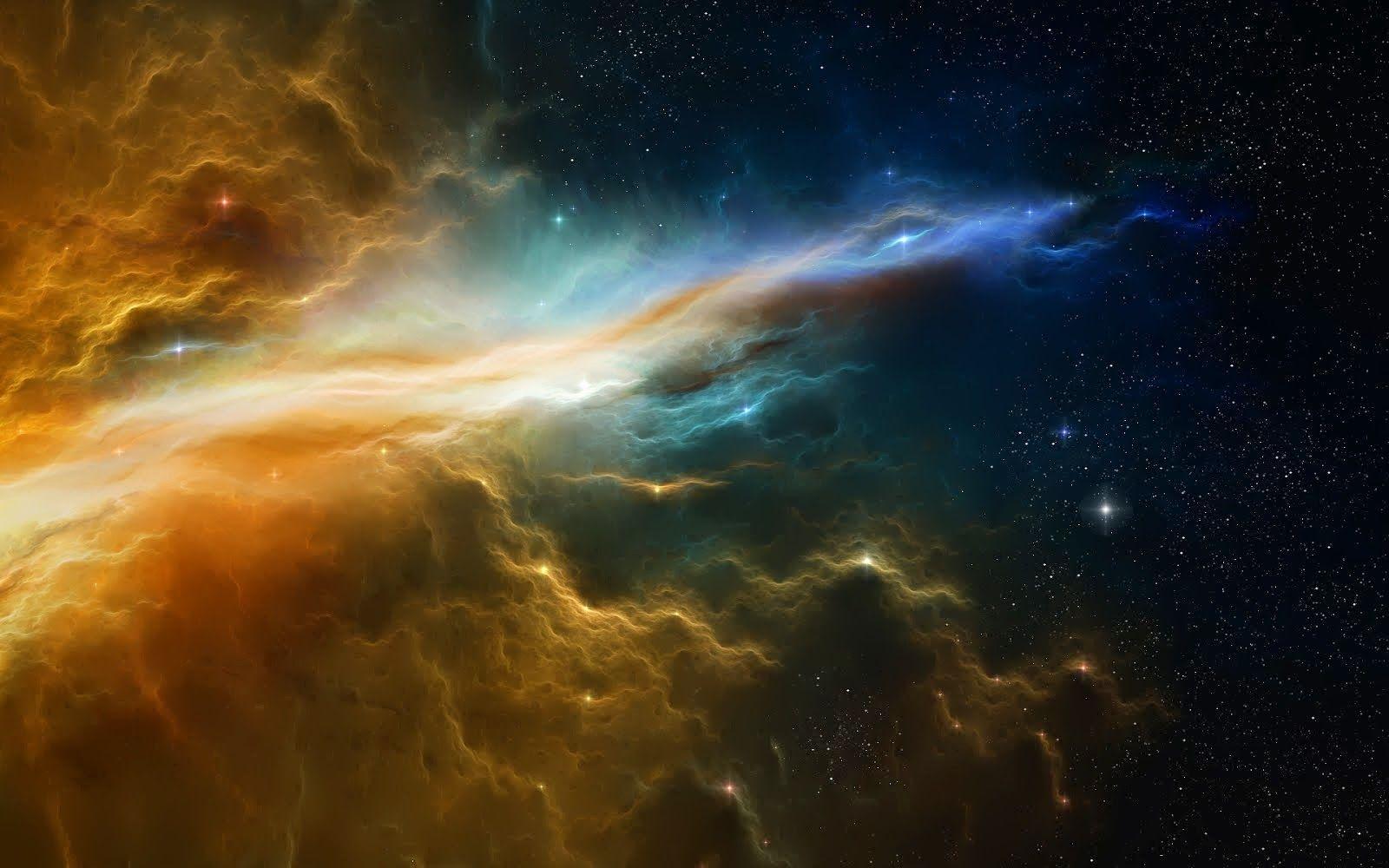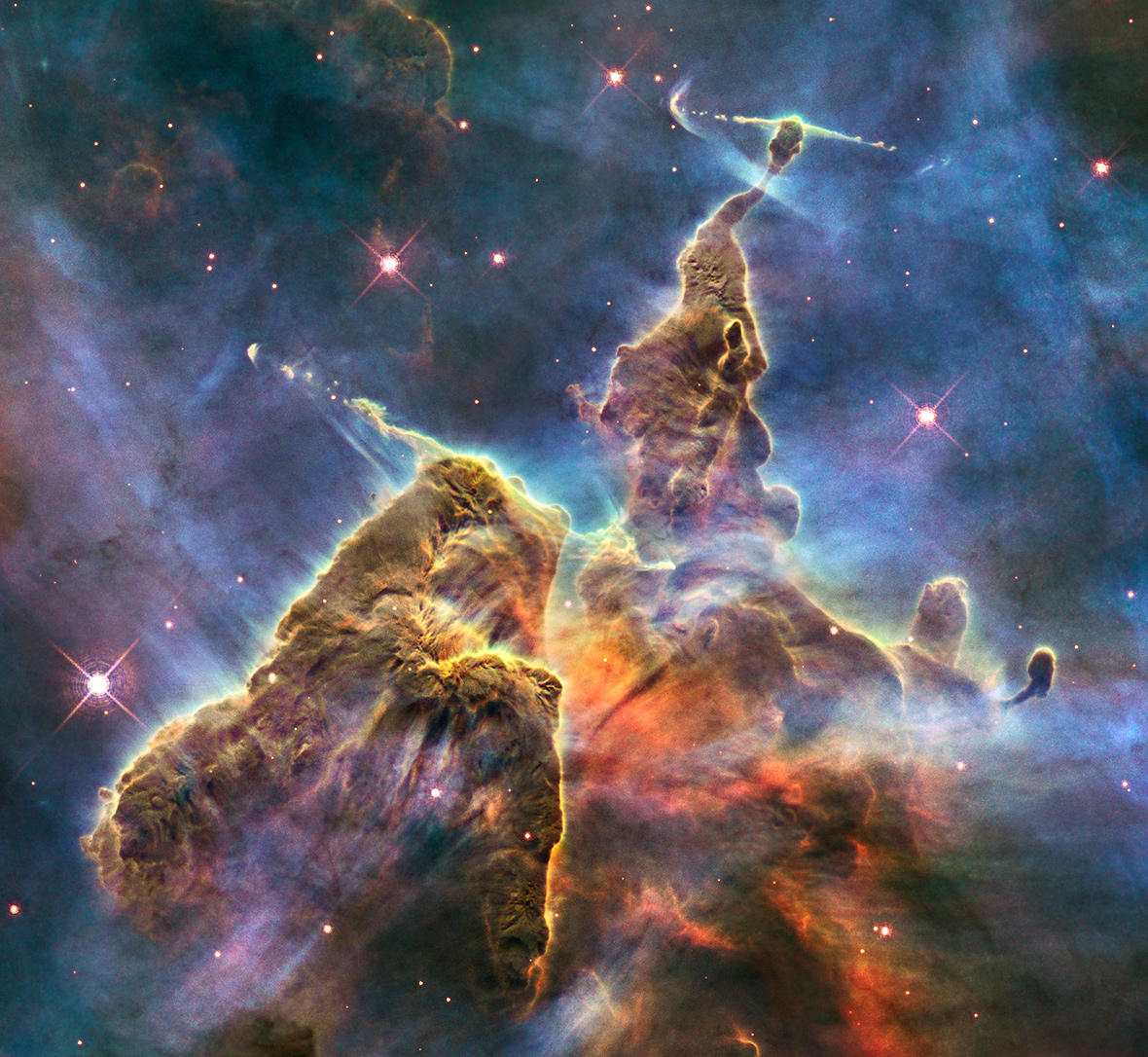
The entrance to my office, features an enormous copy of this image wallpapered on a wall 4m wide and 2.5m tall. So many of Hubble’s images have become iconic, and for me the joy is seeing its beautiful images bring science and art together in a way that engages the public. And this image of the Orion Nebula, is our best chance to imagine what it would look like if we could possibly go there and see it up-close. One of the wonderful things that Hubble does is to reveal the colours of the universe. Of course, what I saw on that long ago night was an amazingly delicate and wispy cloud of gas in black and white. I was a high school student when I first saw the nebula through a small telescope and it gave me such a sense of achievement to manually point the telescope in the right direction and, after a fair bit of hunting, to finally track it down in the sky (there was no automatic ‘go-to’ button on that telescope).

My all-time favourite astronomical object is the Orion Nebula – a beautiful and nearby cloud of gas that is actively forming stars. Robberto (Space Telescope Science Institute/ESA) and the Hubble Space Telescope Orion Treasury Project Team Museums Victoria provides funding as a member of The Conversation AU. He is a Research Scientist at the University of Iowaįred Watson and Tanya Hill do not work for, consult, own shares in or receive funding from any company or organisation that would benefit from this article, and have disclosed no relevant affiliations beyond their academic appointment. William Kurth receives funding from NASA through the Jet Propulsion Laboratory for his work on Cassini. He is a fellow of the Royal Astronomical Society, the Astronomical Society of Australia, and the Macarthur Astronomical Society. Roberto Soria receives funding from Curtin University. Rachel Webster receives funding from the Australian Research Council and the University of Melbourne, and is a Chief Investigator on the ARC Centre of Excellence for all-Sky Astrophysics. Philip Kaaret receives funding from NASA and the Space Telescope Science Institute. Mike Eracleous receives funding from the National Science Foundation and the National Aeronautics and Space Administration though grants administered by the Space Telescope Science Institute. He is a fellow of the Astronomical Society of Australia. Brown receives research funding from the Australian Research Council and Monash University, and has developed space-related titles for Monash University's MWorld educational app. Michael Drinkwater receives funding from The Australian Research Council and The University of Queensland. Lucas Macri receives funding from the National Aeronautics and Space Administration and the National Science Foundation of the United States, as well as the Mitchell Institute for Fundamental Physics and Astronomy at Texas A&M University.

Kim-Vy Tran receives funding from the Space Telescope Science Institute, the National Science Foundation, NASA, and the Mitchell Institute for Fundamental Physics and Astronomy at Texas A&M University. Jane Charlton receives funding from the NSF and from NASA. James Bullock receives funding from NASA and the NSF.

Howard E Bond receives funding from NASA through the Space Telescope Science Institute Geraint Lewis receives funding from the Australian Research Council. Research Scientist in Physics and Astronomy, University of IowaĪlan Duffy receives funding from Swinburne University of Technology and is affiliated with the Australian Research Council's Centre of Excellence for All-sky Astrophysics.Ĭhris Tinney receives funding from the Australian Research Council and the University of NSW Senior Research Fellow, Curtin University Professor of Physics, The University of Melbourne Professor of Physics and Astronomy, University of Iowa

Professor of Astronomy & Astrophysics, Penn State Professor of Astrophysics, The University of Queensland Professor of Astronomy and Director of Center for Space Physics, Boston UniversityĪssociate Professor of Physics and Astronomy, Texas A&M UniversityĪssociate Professor of Physics & Astronomy, Texas A&M University Professor of Astronomy and Astrophysics, Penn State Professor of Physics & Astronomy, University of California, Irvine Professor of Astrophysics, University of SydneyĪstronomer Emeritus, Space Telescope Science Institute and Professor of Practice of Astronomy & Astrophysics, Penn State Professor Astronomer-in-Charge, Anglo-Australian Observatory, Australian Astronomical Observatory Professor and Associate Dean (Research), UNSW Sydney Research Fellow, Swinburne University of Technology


 0 kommentar(er)
0 kommentar(er)
